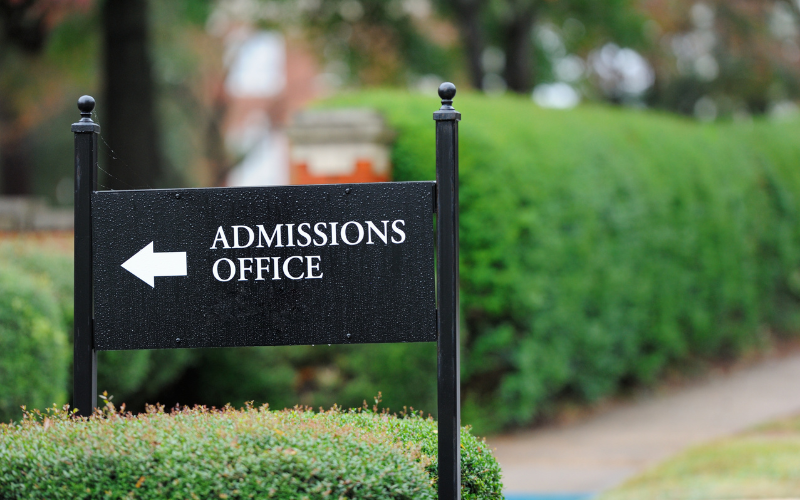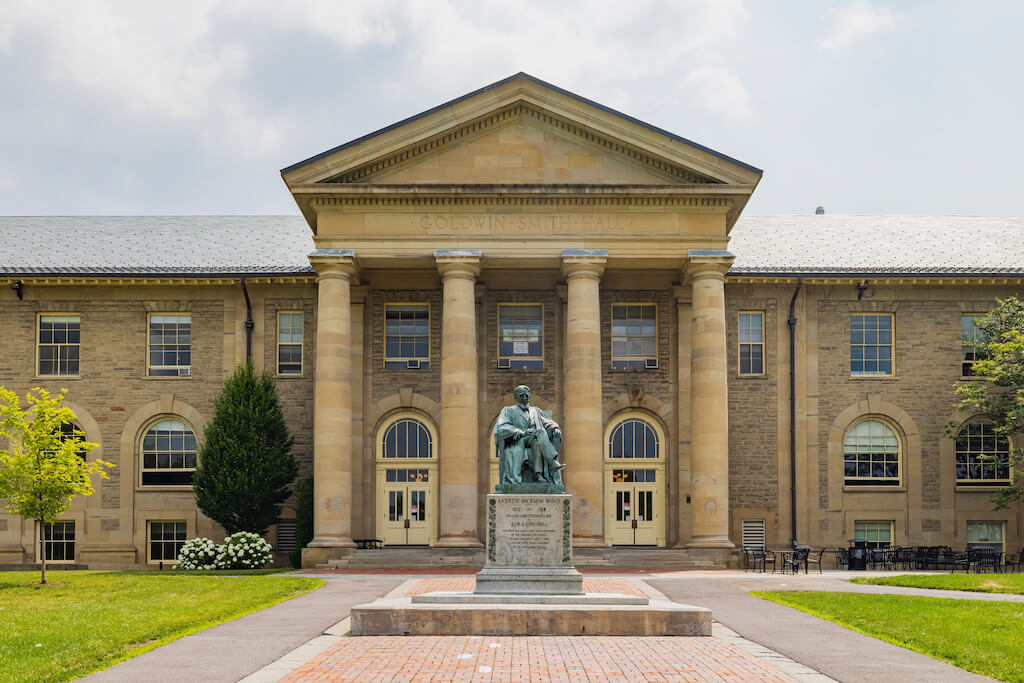Whether or not you believe that the median debt to median earnings ratio presented by the Wall Street Journal (WSJ) is the only way to review the return on education investment, the graphic representation of law schools’ debt to earnings ratio below is sickening.
Of the 169 law schools that are listed in the WSJ database, only eight have ratios below 1.0. These eight institutions are:
- Columbia University
- Harvard University
- Northwestern University
- Stanford University
- Taft University System
- University of Chicago
- University of Connecticut
- University of Pennsylvania
All but one of these law schools is private. Of these eight schools of law, only two have median loan balances below $100,000 (Taft and the University of Connecticut).
Taft is an online, for-profit law school that is recognized by the state of California but not accredited by the American Bar Association (ABA). The University of Connecticut is a public university. The other six made the cut because of the high salaries earned by their graduates.
Given the few law schools that have a ratio below 1.0, I was surprised to see that 65 have median debt balances below $100,000. The majority are public institutions; only 12 are private.
The median debt balances for these institutions range from a low of $57,028 (University of Nebraska – Lincoln) to a high of $99,794 (Case Western University). The driver for the ratios above 1.0 is the median salaries earned are less than the median debt.
There are many high ratios in the list. I counted 60 schools with ratios above 2.0. It’s my assumption that many of the graduates of these schools will seriously consider income repayment plans or working for the government to earn the 10-year public service loan forgiveness.
While it’s startling to see this information displayed neatly in a database, it’s not surprising. I have written about law schools in the past and mentioned Brian Tamanaha’s 2012 book, Failing Law Schools. Tamanaha, a professor of law at Washington University in St. Louis at the time, criticized the fact that 90% of law students borrowed to finance their education and the average law school debt of graduates in 2010 was approaching $100,000.
Compounding the debt problem for their graduates was the fact that many law schools had increased enrollment and were graduating more students than jobs available for newly minted attorneys. Tamanaha noted that his purpose of writing the book was to “expose the disconnect between the cost of a legal education and the economic return it brings.”
Particularly enlightening to me was Tamanaha’s revelation of “the ways in which we have repeatedly worked our self-interest into accreditation standards, from unnecessarily requiring three years of law school to writing special provisions to boost our compensation.”
Tamanaha proposed setting a federal loan cap for law schools. Rather than set a cap per student, Tamanaha proposed setting a cap of $60 million per class per law school. His reasoning was that too many law schools were admitting students who were unable to pass the bar exam and/or unable to obtain a job as an attorney post-graduation. He reported that the total debt of 2010 law school graduates exceeded $3.6 billion.
Tamanaha’s cap imposed the greatest restraint on large law schools. Schools at or above his limit would have to reduce tuition and the number of enrolled students. In addition to a cap on federal loans, Tamanaha wrote that there could not be a federal guarantee on private loans for law school students, nor could there be a prohibition on private loans being discharged in bankruptcy.
Tamanaha acknowledged that the downside of a cap was that schools would place a premium on admitting students whose families could pay full tuition. At the same time, he argued that a hard cap was the only way to stop schools from admitting more students than the market could absorb.
While the data for law school graduates are not good, the number of law school graduates borrowing has declined from the 90% cited by Tamanaha to 69% in the 2015-2016 graduating year as reported by the U.S. Department of Education. Unfortunately, there were no caps placed on the graduate loan program for law school students, and the average loan balance per 2015-2016 graduate was $145,500. This amount was the highest average for all doctoral fields other than medicine and other health science.
Tamanaha’s argument that the third year of law school is unnecessary is probably true. I found support for his argument from numerous credible sources, as well as from anecdotal conversations with friends and relatives who practice law. Unfortunately, law’s accrediting body, the ABA, has not indicated a willingness to change their criteria, and many states only allow graduates of ABA-accredited law schools to sit for the bar exam in order to become licensed attorneys.
The decline in the percentage of law school graduates who borrowed is likely an indicator that the percentage of affluent students attending law school has increased or remained the same, while the percentage of students unable to afford law school without borrowing has decreased.
It’s hard to compare the universe of the graduates’ salaries from U.S. accredited law schools to specific master’s degrees involving graduates’ salaries, so I didn’t. However, the master’s degree that may be arguably as popular for professionals is an MBA. I took a similar screenshot of the MBA chart.
The MBA chart is almost the inverse of the law degree chart, with all but a few schools having a ratio of median debt to median earnings below 1.0. Perhaps it’s an indication of the difference between a market-influenced degree and one that’s not.
Clearly, the median debt is lower because of at least one less year of tuition. The median debt might also be lower because of more online options (the ABA does not accredit online law schools) and because employers are more likely to reimburse for business school classes than law school classes.
Like my recommendations for master’s degrees, I’d like to see a breakout between the percentage of loans used to pay for tuition, fees, and books versus the percentage of loans used to pay for costs of living. My assumption is that some of the law schools located in major cities on either coast will have a higher percentage of loans used for costs of living than law schools located in the South or Midwest. At the same time, those major cities on the coast are likely to pay more for attorneys.
I think it’s always important to be able to have access to tuition and fees for tools like the one created by the WSJ. Including the percentage of students who borrow is another key indicator as well.
There’s nothing wrong with schools of law or colleges and universities charging a higher tuition than other schools, if their graduates earn a higher-than-average salary after graduation. What’s wrong is when other schools of law and colleges play follow the leader and are not truthful or transparent about the data as to the return on investment for their graduates.
Kudos again to the Department of Education for continuing to expand the published data from colleges and universities and kudos to The Wall Street Journal and others who have attempted to build tools to shed a light on the value of a post-secondary education. Ultimately, a transparent market rewards the student more, and that’s what everyone hopes to achieve.













